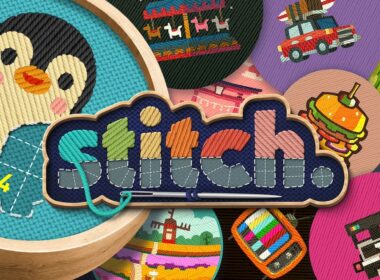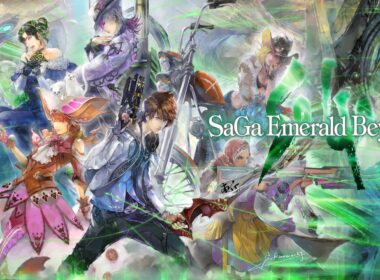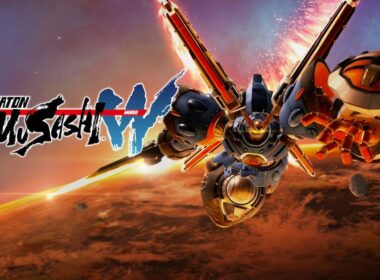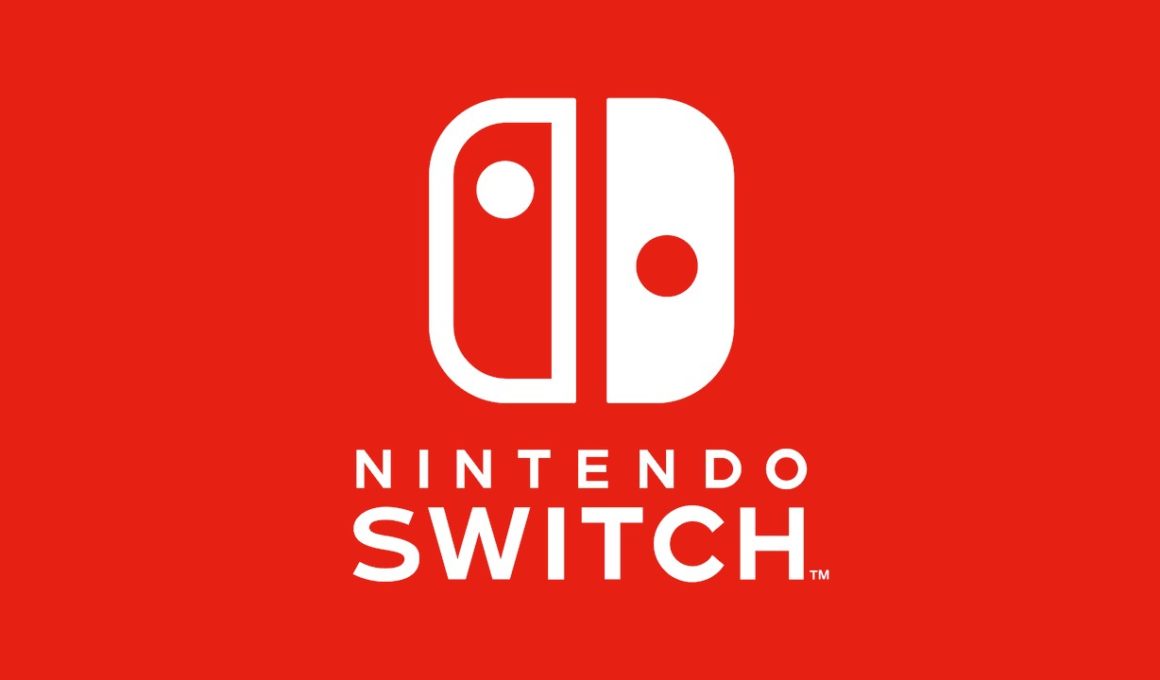We’re increasingly being treated to some rather exceptional releases through the Nintendo eShop on Wii U, and in Child of Light, we find that this exuberantly charming coming-of-age fairytale is no different.
Enchant that it may, but that doesn’t sway it away from having a fairly morbid tone from the outset. We learn that the game’s young heroine, Aurora, is the daughter of an Austrian duke, raised alone after her mother’s untimely death. He remarried some years later, and on that night Aurora catches a chill in her sleep that sees her meet a similar fate. Although we’re soon left to wonder whether she’s actually dead, witnessing her awaken in the unfamiliar kingdom of Lemuria.
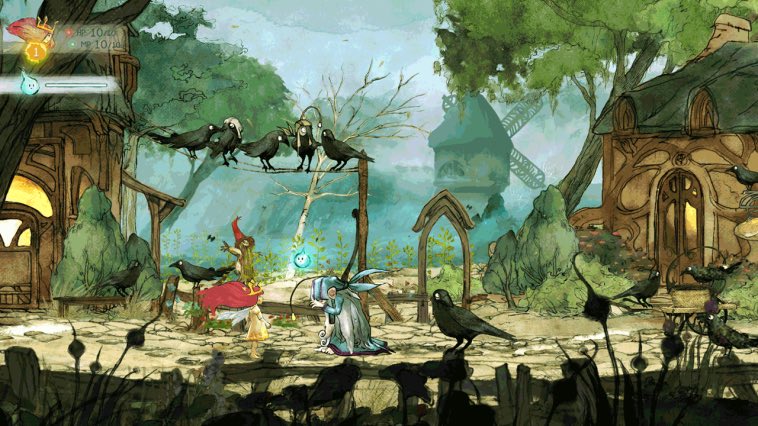
Everything within this fantasy land isn’t particularly hunky-dory either, the Queen of the Night has stolen the sun, the moon, and the stars, the result of which casting darkness across the kingdom. Joined by Igniculus the firefly, who was sent to aid her by the Lady of the Forest, Aurora must recover these celestial entities so that she can return home to her father.
Child of Light is part-exploration, part-light RPG, players sharing Aurora’s journey as she wanders through murky forests, forgotten ruins, and stumbles upon a village whose cursed inhabitants have all been turned into crows. Soon granted the power of flight, the game’s immediate thrill is the freedom with which you can explore your surroundings, Aurora’s hair and dress playfully rustling behind her as she soars through the air.
Igniculus is your companion on such quest, emanating light powered by wishes he can be used to heal your party, activate switches, or blind dark creatures so that you can pass unscathed. This is where Wii U GamePad implementation comes into play, the player designating where they want him to drift to by tapping such location on the touchscreen, or if preferred you can buddy up with a second player who can use a Wii Remote Plus to directly control the excitable blue firefly.
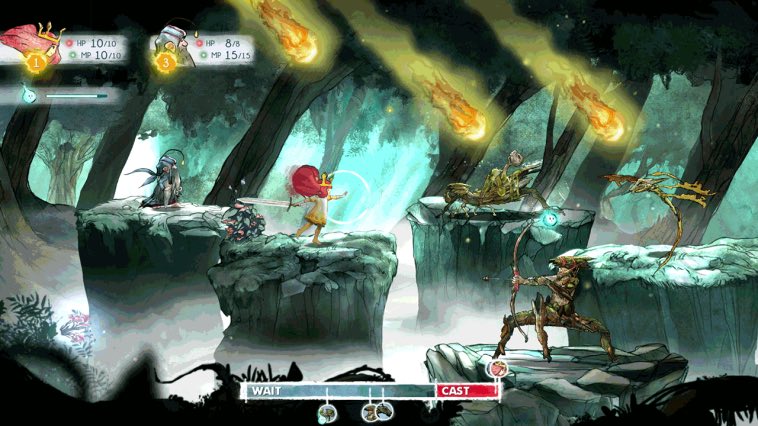
The game’s narrative is crafted in verse and rhyme, which risks either delighting or irritating you. Although those with an aversion to it will find humour in Rubella, a party character that you cross paths with early on, who refuses to rhyme her comments with the others in your troupe. Two’s a crowd, and three’s a party as they say and several others will join your cause, each with their own role to play in battle even though the game chooses not to incorporate an obvious class system.
Battles themselves are partly turn-based, the player choosing between attack, defence or recovery items with whichever choice being placed on a timeline at the base of the screen. Time pauses whilst you decide what action to take, which will then be performed once your character successfully reaches the end of the ‘Cast’ section.
Stronger attacks and spells expectedly take longer, with the continual threat of enemies interrupting your actions before you’ve had the chance to put them into effect. You’re only able to use two characters in battle at any one time, although these can be freely swapped even when fallen which means that even the fiercest scenarios can be conquered with relative ease.
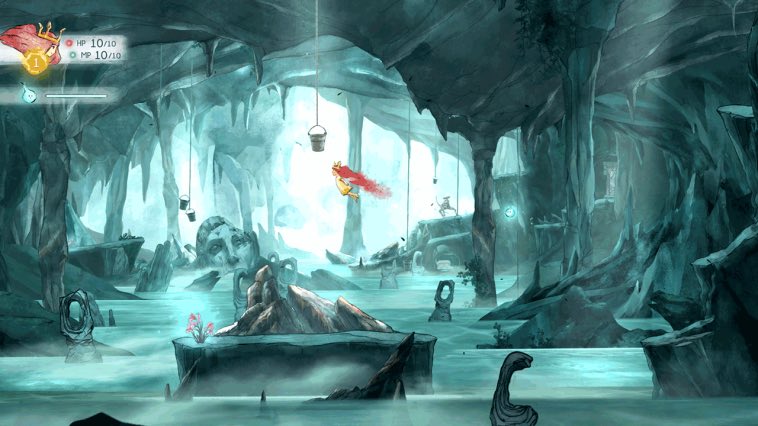
Elemental weaknesses and status ailments also come into play, with your party levelling up through experience gained from your victories. You’re awarded a skill point per each level gained, allowing you to strengthen your characters in multiple directions as you see fit. Jewelled Oculus collected on your travels can be crafted to grant special bonuses to those that carry them, whereas gathered Stardust can be used for permanent stat boosts. There’s notable depth here to help vary your approach, leveraging added strategy that genre fans will appreciate.
It is in the presentation that Child of Light will leave you spellbound, floating through the game’s layered, watercolour landscapes making it feel as if you were drifting through a storybook or painting. That’s thanks to Ubisoft’s acclaimed UbiArt Framework engine, also used for last year’s Rayman Legends, which allows developers to place concept sketches and illustrations directly in games that they are creating. The result is exquisite, with the artwork being even more sublime as you progress on your quest. An accompanying soundtrack only heightens the appeal with its sweeping melodies.
I never expected to have been so enchanted by Child of Light, the game’s hand-painted storybook being elevated by a progressional narrative that never fails to stir you with surprise. There’s room for improvement, and whether Ubisoft will choose to conjure up a successor remains to be seen, but for what we are left to discover is a quest that is well worth embarking upon.
Version Tested: Wii U
Review copy provided by Ubisoft

